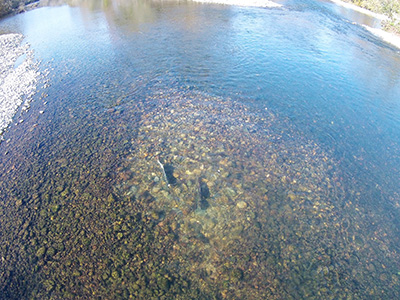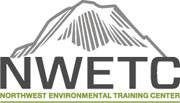
Suggested - "The Ecology of Pacific Salmonids"
Attendees will receive a course manual containing workshop proceedings and reference material.
**Note - For every course we have implemented live stream remote attendance options for those who prefer a no-contact alternative to in-person attendance. You will need a computer and an internet connection. We will follow the maximum in-person meeting size as per health authorities and if recommended we will only offer remote attendance.
If conditions permit, you are welcome to attend the course in-person, we likely will have between 5 to 10 in-person attendee's in a large room to provide safe spacing. We also wipe every surface down and provide hand washing and disinfectant wipes as a courtesy. If you would like more information or have any questions, please contact us via email or phone 425 270 3274.
During state restrictions, in lieu of the in-person field activity portion of this course, we will provide all registered attendees a recording of our BIO-306: Upstream Fish Passage course free of charge.
How can we restore form and function to rivers, streams, and wetlands that support Pacific Salmon? This course provides the intellectual tools to tackle assessment monitoring and restoration design of Pacific salmonid habitat.
Some of the basic topics and questions covered include:
- History of salmonid habitat restoration – How long have salmon issues been issues? How have we responded? What’s been working and what hasn’t?
- Ecohydraulics – How does stream flow affect salmonid ecology and habitat forming processes? What basic ecohydraulic processes do we need to account for? What tools should we use? How can we use ecohydraulics to understand why a site is functional versus non-functional?
- Ecohydraulic design – the basic act of designing channel and floodplain features to meet specific target depths and velocities. How do we take basic habitat information and design functional ecosystems?
- Sediment transport – sediment is a vital aspect of rivers and streams and a key variable known to affect spawning. How does sediment move in rivers? How can we measure and model it? What tools are available?
- Forcing Elements – what role does wood and coarse sediment play in salmon rivers and streams? How can we integrate Forcing elements into our design and management plans?
- Monitoring – How do we measure project success?
- Modern river restoration techniques – What tools do we have to restore salmonid habitat form and function?
- Fish passage – How do we assess and correct fish passage limiting factors?
|
What attendees are saying about the course: "I learned a ton ... [The instructors] are very knowledgeable and helpful when answering questions." Meredith G., May 2019 "I really enjoyed the field component of the class. It incorporated the concepts we learned to a real-life situation." Shena H., November 2015 "Both Joe and Rocko were very engaging and knowledgeable. I really appreciated how enthusiastic and easy-to-listen-to they were." Mandy C., November 2015 "I liked the variety of material covered; how we had both the biology as well as the geomorphology." Paige A., Feb 2013 |

This course is designed for practitioners and agency personnel involved with field data collection, detailed design and/or review of river restoration projects. It provides general training in design, implementation and monitoring of in-stream habitat improvement projects in regulated streams and rivers, with an emphasis on the issues surrounding Pacific salmonid spawning.
Once your order has been placed, you are subject to our cancellation policy regardless of the status of your invoice.
- 31 days prior to training -> 100% refund
- 30-16 days prior to training -> 50% refund
- 15 - start of course -> No refund available
Attendee replacement acceptable at anytime.Course registration fees and cancellation policy are subject to change without notice.
